Unlocking Your Insight Potential
We don’t see things as they are, but as we are.
–Anais Nin
Mariano Tosso wrote a grad paper that I found related to Catherine Tillman’s Cr-Eight paper. His is another grad paper at the International Center for Studies in Creativity, SUNY Buffalo State. Following is a summary.
“Exploring how to unlock the full potential of one’s insight creates immense opportunities for growth. Put simply, doing so amounts ot cultivating one’s inner wisdom. This paper summarizes the key concepts in the study of insights. It integrates recent findings with strategies, tips, and sources that may be relevant to discovering a personal path of transformation and change.”
Tosso quotes a study from Klein and Jarosz (2007), which regards insight as a form of sense-making that involves shifts in understanding and changes in the way a person thinks, acts, sees, desires, and feels.
This 2011 study included 120 cases of everyday insights:
- 44% reported that insights appeared gradually
- 54% said their insights were sudden
- 30% reported their insights as collective
- 10% said their insights depended on coincidence
- 25% reported insights involved some sort of impasse
- 80% were already working on a problem when insight ocurred
- 65% reported some expertise was required to make insight possible
Furthermore, the results often showed that a subject’s realization of a new connection sometimes overlapped with the discovery of a contradiction or inconsistency (Klein & Jarosz, 2011).
Tosso writes that three main points can be drawn from this study. First, one size does not fit all insights; some are gradual others are sudden. Second, uncovering and resolving contradictions may help generate insights. Third, deep questioning may trigger insights.
In light of the study Tosso credits “assumption busting” (Dunne & Dugan, 2007) as a helpful three step process to create insight. First, data representing a challenge or opportunity become key assumptions. Then assumptions are made about the key assumptions. Finally, all assumptions are reversed and put into “what-if” questioning, potentially triggering new solutions by busting the said assumptions.
This is a creative problem solving technique. It an exercise that changes the mind’s perspective and breaks patterned thinking. But of course, one must be motivated to even start, so motivation is a factor in Tosso’s insight process that will influence creativity & insight.
Incubation
As defined by Alex Osborn (1957) in his landmark book Applied Imagination:
The part of the creative process that calls for little or no conscious effort is known as incubation…
Osborn also wrote that the idea-finding stage of problem solving may also trigger leads that incubation can then transform into valuable ideas.
We’ve all experienced that aha moment. But how do we get there?
Na Sio and Ormerod (2009) reviewed 177 empirical research studies about incubation effects on problem solving and concluded that primarily divergent thinking activities had a positive incubation effect, especially when one was living ‘in the moment’. I think of activities like surfing, or skiing when you are responding to your immediate environment. When your brain is “undertaking low cognitive load tasks”.
Do some “what-if” exercises and then take a walk, or work out and see what happens! There are more studies to follow. It’s all so interesting, but I fear attention-span drop off right now…
Separately, two creativity engines, a sensitive stance–slow-paced, fuzzy, intuitive–and a dynamic stance–characterized by divergence and convergence–were identified by Aznar & Ely (2010). The sensitive stance has strong emotional implications and consists of three strokes: departure, emergence, and sensitive convergence. The authors recommended storytelling, imaginary travels, and awake dreaming for the sensitive stance. These techniques engage visual imagery, intuition, and emotions. The authors found useful other techniques for both sensitive and dynamic stances. These are making metaphors, viewing matters from a different perspective, and constructing collages.
Further insight-building techniques proposed by Parnes (2004) include drawing, symbolizing, deconstructing dreams, and using pictures as triggers.
The Torrance Incubation Model (TIM) of Teaching and Learning (Torrance & Safter, 190) (pdf) (coursera) can be useful especially with regards to the gradual process of fostering insights.
Rest
Quiet rest involving REM sleep enhances creative problem solving by integrating unassociated information (Cai, Harrison, Kanady, & Mednick, 2009). Dreams are often reported to be an aid to incubation.
Imagery, Priming, and Mindset
Tosso offers many examples of priming with imagery. I find this section supports the previous sections. The key is to focus the imagery towards the problem needing solving. Possibly, visuals of what are other people doing in the space, what are they not doing.
Enhanced Awareness, Mindfulness, and Context
Self awareness–such as the experience of walking mindfully through a labyrinth, with deliberately pre-set intentions–is another path to unlocking insights. Tosso references a self-guided system called LABgraphic (Boelhower, Miguez, & Pierce, 2013) as providing a transformative technology to access the awareness, vision, and realization of one’s inner wisdom.
Tosso adds a study by Ostafin & Kasman (2012) that found a statistically significant positive correlation between mindful awareness and insight problem solving. That this study suggested that mindfulness training may improve insight problem solving, and it claimed ot be the first research to scientifically bring evidence of a direct link between mindfulness meditation and creativity. According to Tosso, the authors believed the effect occurred because mindfulness meditation promotes a low-level awareness, which involves habitual verbal-conceptual processing of ongoing experiences. That indeed, being in the moment reduces the chances of being constrained by past experiences, and may lead to approaching insight problems with a fresh or beginners type of mindset.
Tosso concludes his paper with the abundance and variety of study on insights, attributing it to the different ways in which the multiple facets of insights and dimensions of creativity can be encouraged and influenced.
He adds the number of tools to foster insights contrasts with their limited popularity in practice, at least in organizations. And he asks one final question: how might we make accessing insight a regular part of life?
I learned a number of things reading his grad paper. And it’s gotten me exploring all sorts of referenced research. I link to it here as my personal bookmarks. Now it’s time for me to do some living in the moment…and see what insights appear!



